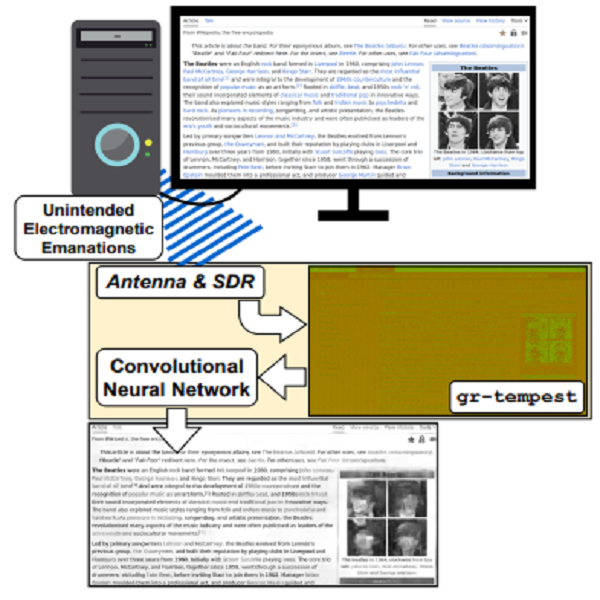A research team from the Engineering School of the University of the Republic in Uruguay have discovered a new cybersecurity threat that utilizes Artificial Intelligence to intercept and interpret electromagnetic signals from High-Definition Multimedia Interface (HDMI) connection. This problem, known as Deep-TEMPEST, has exposed an unexpected vulnerability in what was previously considered a secure connection.
As AI advances, many more threat vectors are being uncovered. The researchers developed an AI models capable of “spying” on computer screens by picking up and interpreting leaked signals from HDMI connection between a computer to its monitor. This approach allows hackers to see what’s on a screen from a distance, without requiring physical access to the device. Despite the complexity of digital high-definition video signals compared to their analog counterparts, the AI model has demonstrated remarkable accuracy in reconstructing these signals.

from its Unintended Electromagnetic Emanations
The process begins with an antenna capturing electromagnetic waves emitted by the HDMI cable and connectors. Then it receives these signals through a Software Defined Radio (SDR) device, converting them into digital samples. Next, software tools are used to process the signals, extract image data, and finally input it into the AI model for image recognition and enhancement. The major part of this research experience is the use of a Deep Residual UNet (DRUNet), an advanced neural network specifically designed for image restoration tasks. By using the network structure and training process, DRUNet significantly improves the quality of reconstructed images, particularly in terms of text readability.
Key Security Implications:
- Advanced Signal Interception: Unlike previous methods that struggled with complex digital transmissions, this new AI model can effectively reconstruct digital signals from electromagnetic leakage.
- Increased Attack Range: Potential attackers can now intercept signals from several meters away, even from outside a building, using an antenna.
- Improved Accuracy: The new technique demonstrates a 60% reduction in error rate compared to previous state-of-the-art methods, making it a more reliable threat.
- Diverse Attack Vectors: Beyond remote interception, adversaries could plant small devices to capture and store or transmit the leaked data.
- Sensitive Data Exposure: This method potentially exposes encrypted messages, login credentials, and other confidential information displayed on screens.
This research demonstrates the need for cyber security professionals to
- Develop countermeasures to protect against such advanced snooping techniques such as electromagnetic shield for HDMI cables and connectors, implement air-gapped systems for critical operations.
- Regularly sweep for unauthorized devices in sensitive areas.
- Enhance physical security to prevent close-proximity attacks.
- Stay updated on emerging AI-powered threats
While Federico Larroc, one of the researchers, suggests that average home or small business users may not be immediate targets for such sophisticated attacks, organizations dealing with sensitive information should seriously consider this threat in their security assessments.
This research demonstrates the potential of AI in the field of information security. It also serves as a reminder that even seemingly secure HDMI connection may pose a risk of information leakage and theft. However, the research team also proposes preventive measures, such as adding low-level noise to the monitor image or using background gradients, which can effectively reduce the success rate of electromagnetic leakage.
As AI continues to advance, it is important for cybersecurity community to anticipate and prepare for these new types of potential attacks, developing effective countermeasures to stay ahead of emerging threats.





